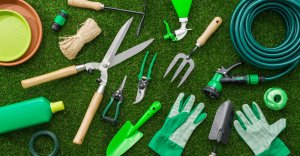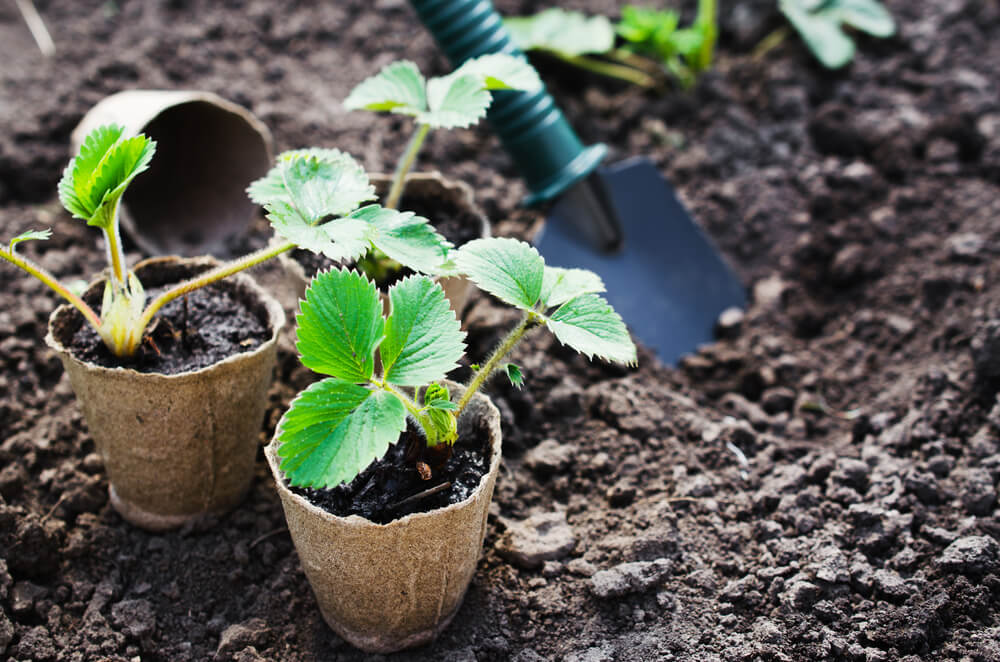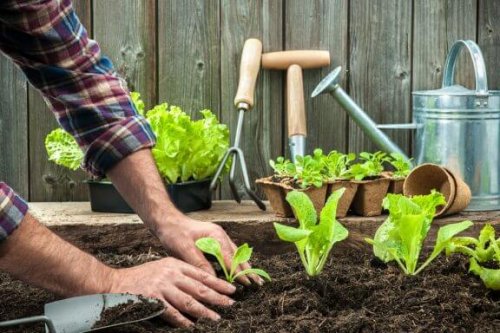10 Easy Tips for Vegetable Gardening

The most important thing about vegetable gardening is to have fertile soil. Before you start, plan where you’ll place your garden, and research what kind of weather and soil you’ll be working with.
Usually, a vegetable garden is a large area to grow vegetables. However, people in the cities have started vegetable gardening at home.
In urban settings, gardens can be as productive as in the fields. You just need to understand your home’s characteristics to grow healthy and strong vegetables.

The perfect conditions for vegetable gardening
It’s very important where you plant your garden. The growth of your garden depends on the weather and climate in your area. Take into account, if it’s in a hot and humid area or if it’s in a cold environment. You should also consider the type of terrain your garden is.
Climatic factors
You can grow a garden anywhere you want. Each place has different climatic factors that can influence how and what plants you can grow, but this doesn’t limit your garden’s productivity.
The most important factors that can impact your garden are light, temperature, wind, and rain.
- Lighting. Plants need light to grow and some plants have different needs than others. Plants like spinach, lettuce or basil need between 14 and 18 hours of light a day, others, like potatoes or peppers, need between 8 to 13 hours, and others, like tomatoes, beans or pumpkins, are in between these times.
- Temperature. Each plant has a unique biological cycle with specific requirements. Depending on this, you should adapt the exterior temperature to your plants’ needs.
- Wind. Light winds can make vegetable gardening easier. The right wind can help your plants to regulate their temperature and avoid freezing, for example. Be careful when there are strong winds because your plants can get dehydrated or wind can wipe out your garden.
- Rain. Frequent rain can help gardens grow, but a lot of rain can make your plants sick. Dew is great because it keeps your plants moist in places with little rain.

Terrain features for vegetable gardening
Alkaline terrains, or soil with a high pH, can keep your plants from absorbing minerals. On the other hand, acid terrains, or soil with low pH levels, don’t hold enough nutrients.
Another important feature is texture. Usually, soil can be sandy or clay. The former can drain water and aerate the plants. The latter is compact, has difficulty draining water, and doesn’t ventilate well.
For good condition soil, fertilize it often. There are two types of fertilizers, chemical or mineral, and natural or organic.
Types of gardens
- A vegetable garden. You could also place big flower pots in the corner of your vegetable garden.
- A terrace or balcony. Here you can use pots of different shapes and sizes. Because you probably won’t have a lot of space, don’t grow big vegetables like artichokes, zucchinis, or pumpkins.
- Garden tables. This is the current trend. These are little metallic structures, made out of plastic or wood, and are very comfortable to work on while standing. They don’t use regular earth, but 100% organic soil.

The perfect size for your garden
Before you set up your garden, you need to know what you will use, to avoid overproduction. First, begin growing small amounts. However, here are some useful data:
- 130 ft2. This is the perfect size for vegetable gardening.
- 215 – 270 ft2. This is great for a seasonal harvest, for example, in the spring or summer.
- 430 – 540 ft2. With this amount of space, you can grow all year round.
- 860 – 1300 ft2. This can cover food for a family of three.
The most important thing about vegetable gardening is to have fertile soil. Before you start, plan where you’ll place your garden, and research what kind of weather and soil you’ll be working with.
Usually, a vegetable garden is a large area to grow vegetables. However, people in the cities have started vegetable gardening at home.
In urban settings, gardens can be as productive as in the fields. You just need to understand your home’s characteristics to grow healthy and strong vegetables.

The perfect conditions for vegetable gardening
It’s very important where you plant your garden. The growth of your garden depends on the weather and climate in your area. Take into account, if it’s in a hot and humid area or if it’s in a cold environment. You should also consider the type of terrain your garden is.
Climatic factors
You can grow a garden anywhere you want. Each place has different climatic factors that can influence how and what plants you can grow, but this doesn’t limit your garden’s productivity.
The most important factors that can impact your garden are light, temperature, wind, and rain.
- Lighting. Plants need light to grow and some plants have different needs than others. Plants like spinach, lettuce or basil need between 14 and 18 hours of light a day, others, like potatoes or peppers, need between 8 to 13 hours, and others, like tomatoes, beans or pumpkins, are in between these times.
- Temperature. Each plant has a unique biological cycle with specific requirements. Depending on this, you should adapt the exterior temperature to your plants’ needs.
- Wind. Light winds can make vegetable gardening easier. The right wind can help your plants to regulate their temperature and avoid freezing, for example. Be careful when there are strong winds because your plants can get dehydrated or wind can wipe out your garden.
- Rain. Frequent rain can help gardens grow, but a lot of rain can make your plants sick. Dew is great because it keeps your plants moist in places with little rain.

Terrain features for vegetable gardening
Alkaline terrains, or soil with a high pH, can keep your plants from absorbing minerals. On the other hand, acid terrains, or soil with low pH levels, don’t hold enough nutrients.
Another important feature is texture. Usually, soil can be sandy or clay. The former can drain water and aerate the plants. The latter is compact, has difficulty draining water, and doesn’t ventilate well.
For good condition soil, fertilize it often. There are two types of fertilizers, chemical or mineral, and natural or organic.
Types of gardens
- A vegetable garden. You could also place big flower pots in the corner of your vegetable garden.
- A terrace or balcony. Here you can use pots of different shapes and sizes. Because you probably won’t have a lot of space, don’t grow big vegetables like artichokes, zucchinis, or pumpkins.
- Garden tables. This is the current trend. These are little metallic structures, made out of plastic or wood, and are very comfortable to work on while standing. They don’t use regular earth, but 100% organic soil.

The perfect size for your garden
Before you set up your garden, you need to know what you will use, to avoid overproduction. First, begin growing small amounts. However, here are some useful data:
- 130 ft2. This is the perfect size for vegetable gardening.
- 215 – 270 ft2. This is great for a seasonal harvest, for example, in the spring or summer.
- 430 – 540 ft2. With this amount of space, you can grow all year round.
- 860 – 1300 ft2. This can cover food for a family of three.







